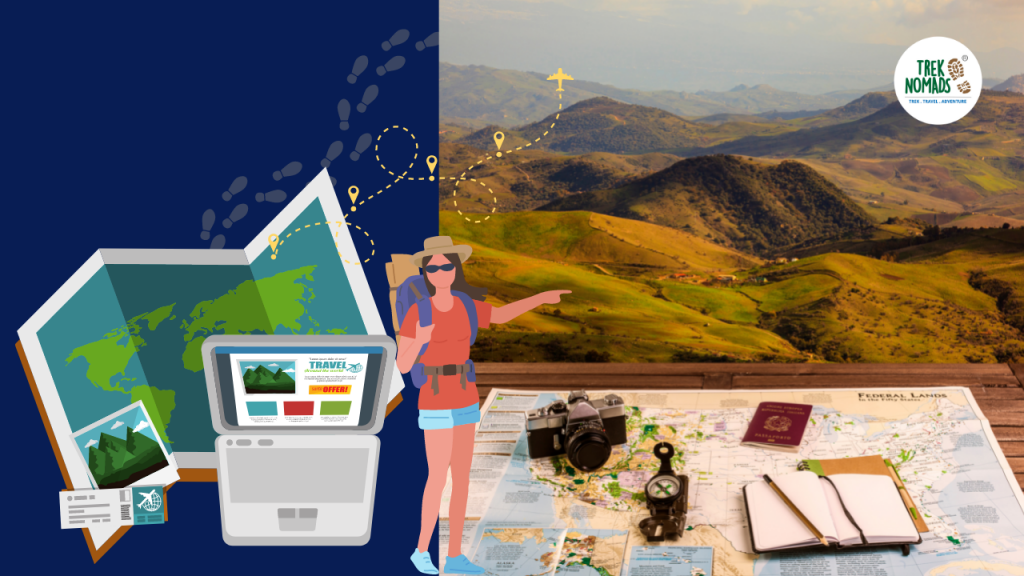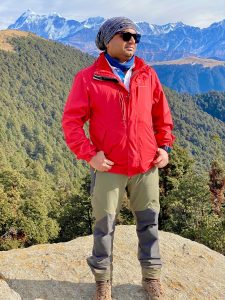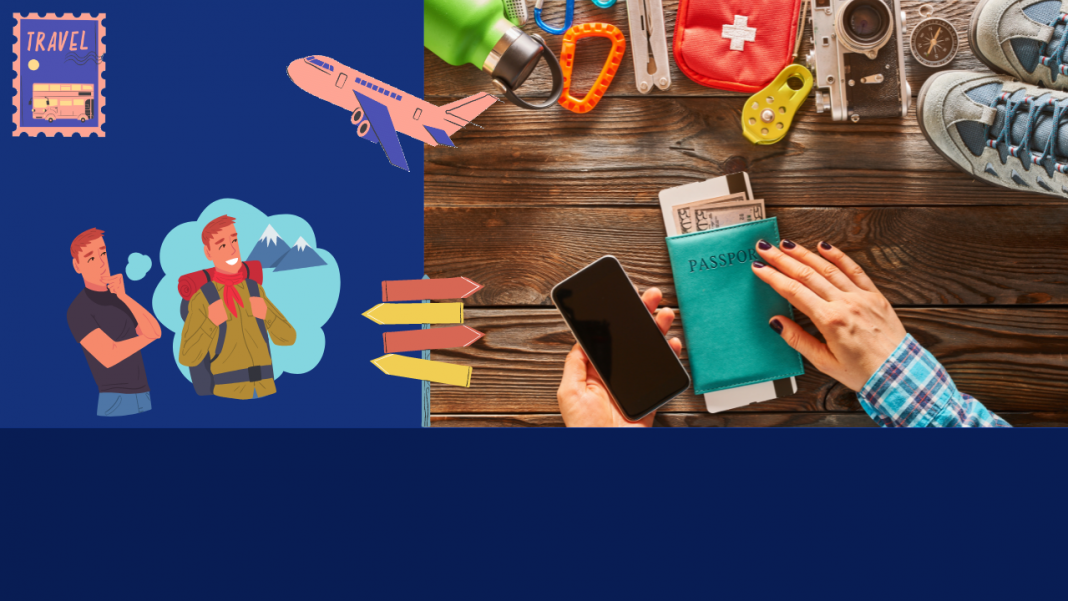One of the most common questions we get asked when people wish to book their trek is “how much does the trek cost?”. It goes without saying that longer International Treks or even multiple-day Himalayan treks need preparation in terms of not just fitness and mental preparation, but financial preparation as well. If you have or are deciding to go on a long trek, and the thought of your finances is worrying you, this trek planning guide is here to help you out!
Trek Planning Guide for dummies

Trekking trips are always exciting. We plan for the trips for months (sometimes for years in advance). I planned my first trek to the Himalayas (Valley of Flowers), for over 3/4 years. Multiple factors may come between you and your perfect trek. Leaves from office, personal commitments, physical fitness, alternate leisure options (e.g. Goa with friends), discouragement from family (I won’t let you go to the mountains, it’s too risky), finances, natural calamities are few such blockers.
Longer treks – Indian Himalayas, international treks (Everest Base Camp, Annapurna Base Camp, Kilimanjaro) also costs more. Not everyone can afford the cost. Indian Himalayas trek can cost up to around Rs 30-40 thousand including air tickets, food, extra days stay, and the main trek fees. The international treks can cost even more. Nepal treks may cost around Rs 80 thousand to a lakh.
This blog is about how to plan and finance your treks. From my personal experience, I will teach you how you can plan, save money and use various hacks to minimize your expenses and still have a good experience.
In this trek planning guide, we will take the Everest Base Camp trek as an example. We will also assume that it will cost around Rs 1 Lakh in total (travel, stay, trek, food, shopping etc). Also, we will assume that you as a trekker are looking for a semi-premium and relaxing experience. So, this blog is not about how to do a trek on a minimum amount. This blog is about how to smartly get the best value for your buck.
The costs involved in a trek

Let’s start by first analyzing all the costs involved in a trek. In our example, Everest Base Camp. I am putting estimated costs under each item.
- Trekking Fees: Around Rs 98,999+: In a premium trek, this cost would involve staying before/after the main event i.e. in Kathmandu, Flight from Kathmandu/Ramechhap to Lukla, 3 times food and coffee/tea during the trek, 2 litres of mineral water/hot water during the trek, porters for your extra luggage along with water proof duffle bag to carry and premium twin-sharing accommodation with private washrooms during the trek. By the way, food during this trek is very expensive. A single boiled egg may cost around Rs 500! If you do not have all meals included during the trek, you may end up spending upwards of Rs 30,000 on food only. So if someone provides a similar trek at a lower price, check the inclusions properly.
- Airfare: Around Rs 20,000+: This is the second biggest cost during the trek. The airfare may vary depending on the available price and the discount received.
- Trekking Clothes, Accessories: This depends if you are a first-time trekker or a regular trekker. I recommend that a first-time trekker should NOT attempt the Everest Base Camp trek. However, if you are going for another Himalayan trek, you may want to buy warm clothes, trekking shoes, a jacket and few other accessories. The best place we recommend is Decathlon for your needs.
- Extra day stay, sightseeing: If you wish to extend your trip, you may have to plan for the costs involved in stay, food and travel during this period.
- Shopping: This is completely discretionary spending. Not everyone will shop. However, if you are planning to get few souvenirs for your friends and family back home, you need to consider this.
We can see that the Everest Base Camp or similar trek can cost you somewhere around Rs 1 Lakh to Rs 1.5 lakh for a 20-25 day experience.
An Indian Himalayan trek (e.g. Valley of Flowers trek) may cost around Rs 50,000 with the above cost elements.
Shelling out this much money may sound like a big task at one go. So how do we make sure that we have this kind of money without making a big dent in our pocket?
Plan Ahead

When it comes to trekking, few trekkers like impromptu plans without further planning. In fact, these trekkers hate planning. Impromptu plans are exciting – however, these are not always pocket-friendly. So how do we plan our finances in advance for a trek?
For example, we want to save Rs 1.5 Lakhs for our Everest Base Camp Trek. We have 12 months to plan the trek. We need to save Rs 12,500 per month. This may be a big amount to save every month. This trek planning guide dives into how you can financially plan a trek even if your plan is impromptu.
- Eliminate unnecessary expenses: List down all your expenses and identify the ones which you can eliminate. E.g. going out for food/drinks every week, online shopping, unwanted subscriptions, and such. You can easily remove 10-30% of expenses this way if you scrutinize each very practically.
- Income – Saving = Expenses: This is the most powerful advice. As written in the book, “The Rich Dad, Poor Dad”, make sure that you save first. Whatever is left, should be spent. E.g. if your income is Rs 1 lakh a month and you want to save Rs 20,000, you should save this amount at the start of the month itself. Now plan all your expenses based on Rs 80,000. Remember, Savings is not what is left after your expenses, it is before that.
- Start SIP: Systematic Investment Plan (SIP), is the best way to save money for the big trek. For our trek, we need Rs 12,500 to be put in SIP every month. How should we do this?
- Open account in apps like Kuvera, Zerodha, Groww. Here you can start a SIP almost instantly post-creating your account.
- Link your bank account (generally salary account) and put the SIP date a day after your salary credit date. That way, the SIP is withdrawn before you start spending your salary.
- Invest in less risky instruments. Debt mutual funds are best, as they are less volatile. It would give you lesser returns but the risk would be low. Remember, we are saving for a year only. So don’t risk it by saving in stocks or mutual funds with higher risks and volatility.
Trek Planning Guide – Hacks to save money while booking your trek

This trek planning guide also covers a few money hacks that can help you save some bucks when you’re planning your trek.
- Check for discount coupons: Trekking companies may run promotional offers from time to time. Look out for these offers and try to get available discounts. This will reduce the main trek cost by 5 to 20% – depending on the offer.
- Get group discounts: It is always fun to trek with your friends. All trekking companies may provide group discounts. Once you have a group of 5 or more friends, you can reach out to trek organizers for additional group discounts.
- Check for No Cost EMI Options: A lot of times your credit card company or the trekking company may run offers where the entire trek cost can be broken into easy pay EMIs. If these are no-cost EMIs, it will remove the interest cost and also take the load off from your cash flow. Even if you have a SIP running, you should go for a no-cost EMI option. At-cost EMI options may charge interest of around 13 to 15% during the tenure. You can use this option if you are unable to save.
- Get Equipment on rent or from friends: Trekking equipment like bags, shoes, jackets are expensive if you purchase them. Also, you may not use these regularly. There are companies that rent out these at a reasonable cost. The best option is if you can take it from a friend you know. Make sure that you sanitize the equipment taken on rent. Also, when it comes to trekking shoes, make sure it fits you properly. A bad shoe may ruin your experience completely. Companies like Sharepal can be your renting buddy. Rent anything from Down Jackets to Go Pros for your next trek and save your costs on purchasing equipment and trek clothing.
Good books to read on personal finance

Saving regularly is one of the best things you can do in your life. While spending on material goods gives you happiness, happiness does not last long. However, spending on experiences (like trekking) may give you lifelong memories. Below are good books you can read if you want to learn more about personal finance and saving.
- Rich Dad Poor Dad – by Robert Kiyosaki and Sharon Lechter
- I Will Teach You to Be Rich – by Ramit Sethi
- The Richest Man in Babylon – by George S. Clason
- The Millionaire Next Door – by Thomas Stanley and William Danko
- Think and Grow Rich – by Napoleon Hill
Did you like this trek planning guide? Drop in a comment below about how you choose to plan your trek financially.
About the author:
 Mahendra Rathod has done Post Graduate Diploma in Management(PGDM) from the Indian Institute of Management Bangalore (IIMB) and a Bachelor’s degree in Mechanical Engineering from M.S. University Baroda.
Mahendra Rathod has done Post Graduate Diploma in Management(PGDM) from the Indian Institute of Management Bangalore (IIMB) and a Bachelor’s degree in Mechanical Engineering from M.S. University Baroda.
Reading, trekking and running are what keeps him going. He is a thinker with a thirst for knowledge of various subjects including public affairs, economics, fitness, human behaviour, etc. He is also an active business mentor. To know more about Mahendra, click here.

[…] The overall trek + equipment (if you are a first-time trekker) can be around Rs 2,00,000 (US$ 2,500+). Read our blog on how to finance your treks. […]